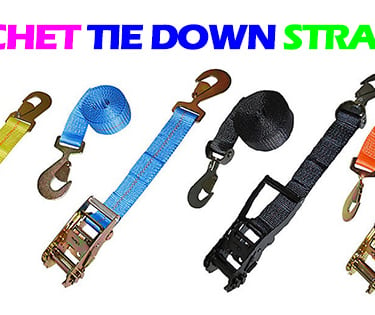A Guide on How to Properly Use Tie-Down Straps
how to use tie down straps
Tie-down straps are essential tools for securing and transporting various items, whether it be for personal or professional use. These straps provide a reliable and secure method to keep your cargo in place during transportation. In this guide, we will walk you through the proper usage of tie-down straps, including how far down they should go and how to use ratcheting tie-down straps.
1. Choosing the Right Tie-Down Straps
Before you begin, it's important to select the appropriate tie-down straps for your specific needs. Consider the weight and size of the cargo you will be securing, as well as the type of vehicle or trailer you will be using. Look for straps with a suitable weight capacity and durable materials, such as nylon or polyester.
2. Securing the Cargo
Start by placing your cargo in the desired location on your vehicle or trailer. Ensure that the cargo is centered and balanced to prevent any shifting during transportation. Once the cargo is in position, follow these steps to secure it:
Attach one end of the tie-down strap to a secure anchor point on the vehicle or trailer. This can be a designated tie-down point or a sturdy part of the frame.
Thread the loose end of the strap through or around the cargo, depending on its shape and size. Make sure the strap is positioned securely and won't slip off during transit.
Bring the loose end of the strap back to the anchor point and attach it to the ratchet mechanism or buckle.
Tighten the strap by operating the ratchet or pulling the loose end through the buckle. This will create tension and secure the cargo in place.
Double-check the tightness of the strap to ensure it is secure. The strap should be snug, but not overly tight, to avoid damaging the cargo or the strap itself.
3. Determining How Far Down the Tie-Down Should Go
The length at which the tie-down strap should go down will depend on the size and shape of the cargo, as well as the specific requirements of your transportation method. As a general rule, the strap should be long enough to provide adequate tension and secure the cargo firmly without excessive slack. Avoid any loose or dangling sections of the strap, as they can become a safety hazard.
4. Using Ratcheting Tie-Down Straps
Ratcheting tie-down straps are a popular choice due to their ease of use and ability to provide precise tension control. To use a ratcheting tie-down strap:
Attach one end of the strap to a secure anchor point.
Thread the loose end through or around the cargo, ensuring it is positioned securely.
Insert the loose end of the strap into the ratchet mechanism and begin cranking the handle.
Continue cranking the handle until the strap is tight and the cargo is secure.
To release the strap, simply press the release lever or button on the ratchet mechanism.
Remember to always follow the manufacturer's instructions and guidelines when using tie-down straps. Regularly inspect your straps for any signs of wear or damage, and replace them if necessary. By properly using tie-down straps, you can ensure the safe and secure transportation of your cargo.




